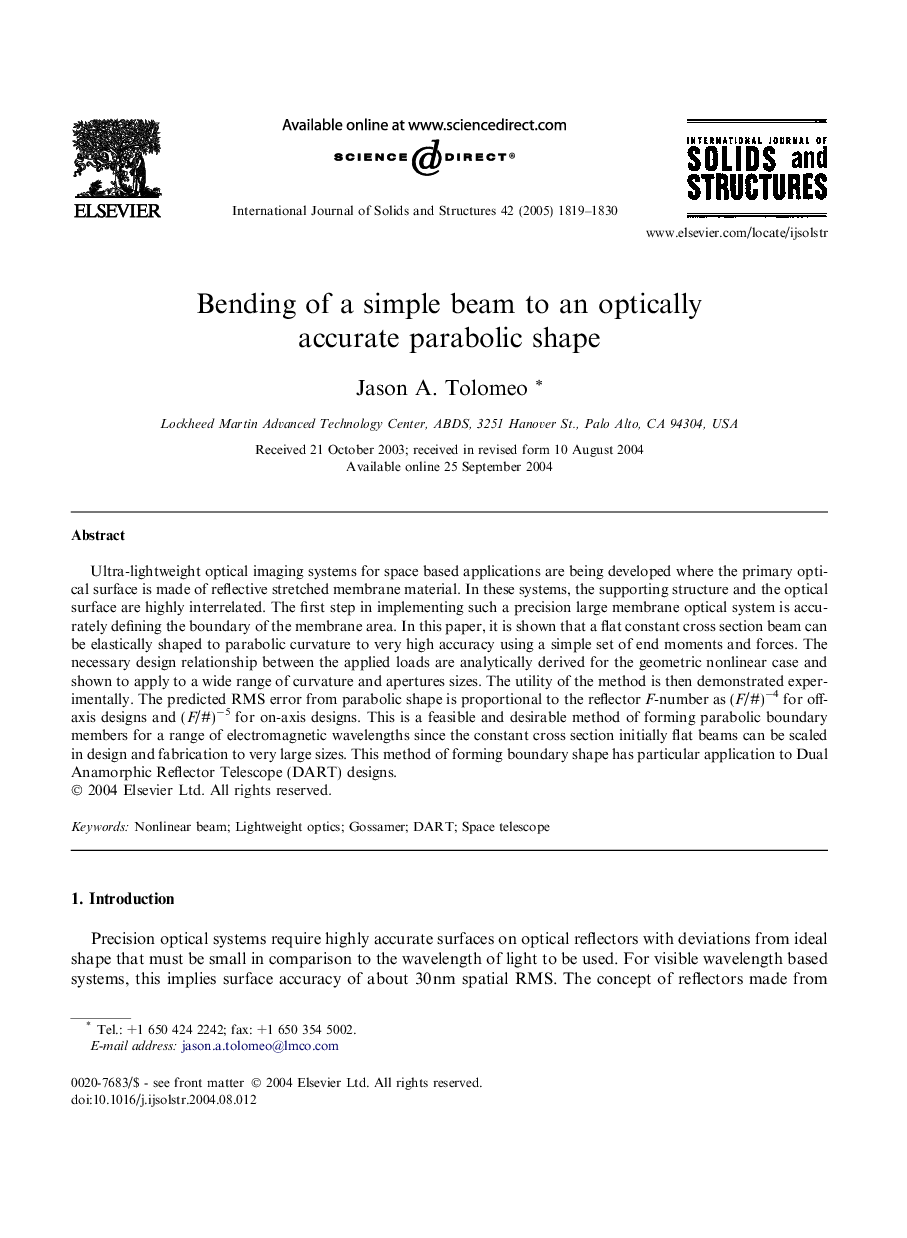| Article ID | Journal | Published Year | Pages | File Type |
|---|---|---|---|---|
| 9639726 | International Journal of Solids and Structures | 2005 | 12 Pages |
Abstract
Ultra-lightweight optical imaging systems for space based applications are being developed where the primary optical surface is made of reflective stretched membrane material. In these systems, the supporting structure and the optical surface are highly interrelated. The first step in implementing such a precision large membrane optical system is accurately defining the boundary of the membrane area. In this paper, it is shown that a flat constant cross section beam can be elastically shaped to parabolic curvature to very high accuracy using a simple set of end moments and forces. The necessary design relationship between the applied loads are analytically derived for the geometric nonlinear case and shown to apply to a wide range of curvature and apertures sizes. The utility of the method is then demonstrated experimentally. The predicted RMS error from parabolic shape is proportional to the reflector F-number as (F/#)â4 for off-axis designs and (F/#)â5 for on-axis designs. This is a feasible and desirable method of forming parabolic boundary members for a range of electromagnetic wavelengths since the constant cross section initially flat beams can be scaled in design and fabrication to very large sizes. This method of forming boundary shape has particular application to Dual Anamorphic Reflector Telescope (DART) designs.
Related Topics
Physical Sciences and Engineering
Engineering
Civil and Structural Engineering
Authors
Jason A. Tolomeo,
